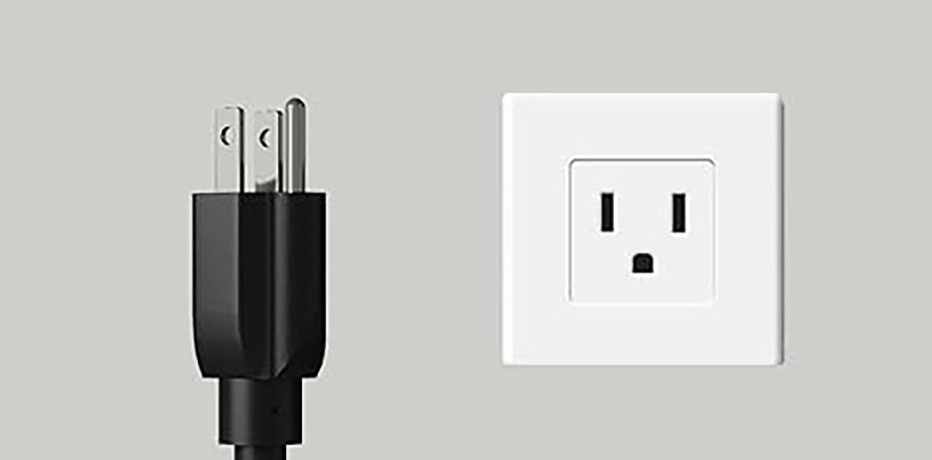
Understand Common NEMA Connector Types and Choose the Right EV Charging Outlet
If you’ve ever looked at the back of an electric dryer, air conditioner, or EV charger, you’ve likely encountered a NEMA connector—whether you recognized it or not.
NEMA, short for the National Electrical Manufacturers Association, defines the plug and receptacle standards used across North America. Understanding NEMA connectors is essential for choosing the right plug-in EV charger, outlet, or extension cord that fits your home’s wiring.
This guide will help you decode what those numbers mean (like 5-15, 6-50, 14-50), and which ones are safe and appropriate for your EV charging setup.
Related guides:
• NEMA 5-15 and 5-20: Can You Use Standard 120V Outlets for EV Charging?
• NEMA 14-50 and Other 240V Outlets for EV Charging
1. What Does “NEMA” Stand For?
NEMA stands for the National Electrical Manufacturers Association, which develops standards for electrical equipment, including the plugs and receptacles used in residential, commercial, and industrial applications.
In the U.S. and Canada, almost every 120V or 240V outlet follows a NEMA connector configuration.
2. How to Read a NEMA Code
Each NEMA connector has a code like NEMA 5-15R:
- The first number indicates the connector family—usually linked to voltage and wire count
- The second number indicates the amperage rating (e.g., 15, 20, 30, 50)
- P stands for plug, R stands for receptacle (outlet)
- A preceding L means it’s a locking version (e.g., L6-30)
Examples:
- NEMA 5-15R = common 120V household outlet
- NEMA 14-50R = 240V, 50A four-prong outlet for EV charging
- NEMA L14-30P = 30A twist-lock plug used in generators
3. NEMA Outlet Voltage and Use Categories (Expanded)
NEMA connectors can be broadly categorized by voltage level, pin configuration, and typical use case. Here’s a breakdown of the most relevant groups:
| NEMA Type | Voltage | Amps | Wires | Ground? | Neutral? | Common Uses |
|---|---|---|---|---|---|---|
| 1-15 / 1-20 | 120V | 15–20A | 2 | ❌ | ❌ | Obsolete 2-prong devices |
| 5-15 / 5-20 | 120V | 15–20A | 3 | ✅ | ✅ | Standard home outlets, Level 1 EV charging |
| 6-15 / 6-20 | 240V | 15–20A | 3 | ✅ | ❌ | Window A/C units, power tools |
| 10-30 / 10-50 | 240V | 30–50A | 3 | ❌ | ✅ | Older dryers, stoves (no ground) |
| 14-30 / 14-50 / 14-60 | 240V | 30–60A | 4 | ✅ | ✅ | Dryers, EV charging, RV parks |
| 6-50 | 240V | 50A | 3 | ✅ | ❌ | Welders, some EV chargers |
| TT-30 | 120V | 30A | 3 | ✅ | ✅ | RVs and travel trailers |
| L6-30 / L14-30 | Varies | 30A | 3–4 | ✅ | Varies | Twist-lock plugs for portable power |
EV Charging Tip:
- NEMA 14-50 is the most common outlet used for Level 2 EV charging
- NEMA 5-15 / 5-20 support Level 1 charging from a standard wall outlet
- NEMA 6-50 is used by some EVSEs that don’t require a neutral wire
- Older dryer connectors (like 10-30) can be repurposed with proper adapters—but must be used with caution
4. Which NEMA Connector Should You Use for EV Charging?
This depends on your charger, home wiring, and local code. Most EV drivers will encounter one of the following:
- NEMA 14-50: 240V, 50A. The gold standard for plug-in Level 2 charging. Requires 4 wires (2 hot, 1 neutral, 1 ground).
- NEMA 6-50: 240V, 50A. Same amperage as 14-50 but without a neutral. Compatible with some EVSE models like Emporia.
- NEMA 14-30: 240V, 30A. Often found in dryer rooms. Acceptable for lower-current EV charging (24A or less).
- NEMA 5-15 / 5-20: 120V, 15–20A. Level 1 charging. Slow but usable for overnight top-ups.
Learn more: NEMA 14-50 and Other 240V Outlets for EV Charging and the comparison between NEMA 14-50 vs NEMA 6-50.
5. Can You Use an Adapter?
Adapters are widely sold online to convert between plug types, but not all are code-compliant or safe.
- UL-listed adapters with GFCI protection and circuit matching can be used
- Avoid cheap adapter cords that allow higher-current EVSEs to connect to under-rated outlets (e.g., 14-50 to 10-30)
- NEC 2020+ requires GFCI protection for outlets like NEMA 14-50 in garages
When in doubt, always consult an electrician.
6. Conclusion
NEMA connectors may look like a string of confusing numbers and prongs, but once you understand the naming system and configurations, it’s easy to match your EV charger to a compatible and safe outlet, when you are installing an ev charger at home.
For most EV owners, a NEMA 14-50 or 6-50 connector will provide fast, reliable charging—but it’s important to match your equipment to your wiring and local code.
Explore our linked guides to dive deeper into specific connector types and their best use cases.
